
|
|
|
|
|
| |
|
|
|
| |
|
|
|
| |
|
|
|
|
|
 Dumog and Tranka is Filipino Wrestling! Dumog and Tranka is Filipino Wrestling!
|
| |
|
|
|
Pangamut is Trapping added to Boxing / Kicking and the following
Filipino Wrestling = Dumog ( pushing, pulling, rolling joints) use of body manipulation and Tranka ( locking) Standing prone, squatting on one knee or laying on sides or back!
Simply put I can not list all the locking we use below and even if I did it would not matter you must feel and play with then and react. Then counter the lock, reverse it, escape it, cause opponents body to change by stance or moving and isolating and immobilizing a part of his body as you travel. Or just strike targets as opponent locks. Itís in the reacting that the real skill in using Tranka (locking) combined with Dumog (which is actually just rolling, pushing, pulling, an arm or moving, manipulating of the opponents body with a simple turn of the wrist or change of stance). Lock flow and lock progression and flow striking flow drills is the way to make it functional in a real fight or mugging situation! Practice scenarios of a robbery, mugging, rape, being jumped while walking or getting into a car. Increase effectiveness and spontaneous reactions with flow drill training; ( Hubud, Ridgehand backfist, center line inside and outside Deflection drills, Punta, Punyo flow). Do a flow drill and later flow between all of them but at points you would break out of those patterns at any point to do a lock or choke then to a take down or throw or right back into the flow. Such is the beauty of the JKD way of training martial Arts. These are the ways to really make Dumog / Tranka useful and reactionary.
For a partial list of locks go to the end of this page. (However there are no chokes or other training techniques are included there).
|
Pannatukan or Suntukan are the Philippine age old concepts of Filipino Boxing! (Filipino language is not like ours in that there is not really one national Language. Togolog is suppose to be. But just as many speak Cebuano or Visyan. There are numerous other dialects spoken and used all over the Philippines. A Filipino usually speaks two or more dialects in addition to English in most Provinces (or Counties as we would call them).
Historically Filipino Boxing includes the use of elbows, arm and shoulder stops, pushing, pulling, shaking causing manipulation of the opponents body. We like to call these concepts dumog (shake and bake) the opponent!
When the USA was still punching in the old English style, arms out stretched in front of the body Filipinos held elbows
close to body to use to destroy incoming fists and were punching foot tongs or slippers which they placed on their hands as
pads used as focus mitts are today. During the revolutionary war the North hired a band of pirates to infiltrate the
Louisiana Bayous and use their famous sword and knife culture to attack and maintain areas to stop the Southís supply lines
from getting through. This turned the tide of the war for the North. Those Pirates were John Lafoot and his men who were
Filipino as many of the pirates on the high Seas were in those times! They influenced us bringing their concepts of knife
fighting and boxing, the use of hand pads or mitt training way back in 1775. Which helped change boxing in our country as
well as created the idea for and cause the future development of focus mitts used in the USA today. Boxing and grappling are
two important skills of a fight, but not enough to be what I call a good or sophisticated fighter using more then braun and
struggling your might (which is dependant a lot on size which Filipinos did not have). We do want to know those skills
because they are a good basis that we build from adding low kicking, then trapping skills. Then a smaller or weaker person
does not have to trade punches or match strength with a larger to win.
There are some differences. Briefly put the boxing training is much the same as western boxing. Except many times
uppercuts and hooks may not be, but instead they may be an elbow. The elbows once fired can flow using both arms, one right
behind the other. It is devastating! Bare knuckles with a barrage of bare pointed elbow hitting not just any where but at
specific pressure points means a fight did not last long, just seconds. It was not sport, but to kill and move on. In more
recent history Filipinos were Pirates and fought to gain plunder from Spanish, English, and other ships. Again hand striking
came from and is the same as the stick, tip and butts, and there are ways of training boxing skills using a helper holding a
vertical or horizontal stick as others tap the sticks for beats of time and rhythm. There is a method of covering as boxers
do when cornered on the ropes but the elbows slid up or down or turned out slightly to be used or guided into pressure points
on the opponents arms, fists, even legs as he is trying to barrage you in punches (and kicks if Pananjakan or Sikaran
fighting). This causes destruction to an opponents knuckles, arms as well as cause cramping, arm fatigue, and bruise in pain.
Covering your face while you can still see and breath without getting hurt allows you to rest while opponent tires of
punching. Once your breathing and seeing through the cover well enough you start punching as he weakens and opens or drops
his guards!
|
Next is Pangamut. Trapping entries opens up a whole new world in the Filipino Martial Arts! It allows tactics that circle to opponents weakest position, zones to his sides, or closes off distance that negate use of limbs in his attack. Causes opponent to alter his own body mechanics stopping him from striking as he wanted with any power unless he corrects by moving again. Added to that manipulation. He’ll alter his body in reaction to stings, pains of pressure point hitting, deflections interrupt strikes as they continue to vital targets (eyes, ears nose, throat). These counters play on rhythm, distance, timing, (steels beats of time opponent needs for tools of attack). Fast flowing follow up moves quickly touch multiple vital points and lead right into Finish moves (locks, chokes, breaks, head buts, knees, elbows, throws, off balancing take downs into walls, flours, corners, obstacles or other people). The boxing and kicking is used only briefly till entry, follow up and finish (average about 23 to 60 seconds). Pangamut uses boxing and low leg techniques, only till you figure your opponent out a little, then employ trapping entries as soon as possible, then head butts, knees, elbows, push, pull arms or legs swung at you, use locking, throws etc. Follow ups usually mean closing distance without opponent being able to see it many times Bursilot techniques or Indonesian Silat finishes the opponent without knowing which way he is going, if not opponent mind is confused, very occupied and grappling locks, breaks chokes are easily used without opponent being able to resist or counter.
Empty hands in Filipino Martial Arts is simple fast and effective!
Arnis, Eskrima or Kali are regional catch all names for Filipino Martial Arts. The Philippines was and is in the center of ocean traffic in Asia and needed to learn to defend them selves from attackers and invaders. They were friendly, warm, giving natives on Islands with numerous resources desired by Chinese, England, France, Spain and later was a strategic location for military concerns, attacks and bases to supply and maintain the same. There were many visitors and attacks to take and bring back resources and several occupations of the Philippines through out history up until recent times, examples Japan, then the lastly by the USA. Because of this history Martial Arts developed as hand held weaponry first. What ever they had on them when working and attacked or what they could pick up! They hand to defend their homes and lands from attackers for 2,000 years with sticks, work and farm tools as well as various types of swords. These Art was battle tested and handed down from father to sons , generation after generation!
The techniques come from the stick and knife movements. The weaponry knowledge was very well developed as a result but so to was the empty hands. If you can do the knife technique, the training drills, the flow exchanges energy flow drills, strike and counter every strike without being touched then empty hands may seem like slow motion, easy break time. Knife training starts with a wood rattan doll rod. These techniques were not created for tournaments or through forms and imagined attackers, but in response to fears of attacks, real attacks in the heat of battle. What works and did not was known through survival in many battles, time tested battles throughout history. Empty hands are broken down into three main areas! Panantukan (boxing and elbow techniques), Pananjakan (low kicking, low leg techniques with boxing, there is also Sikaran (high kicking) lastly Pangamut which has both the former. Pangamut trapping ways of movement is very distinctive. It is the essence and what creates the effective look of Filipino fighting, allows for so many possibilities, fast flowing follow up hitting, the variety of finishes used in the empty hands, knife and stick fighting; which it is famous for! The use of these specialized trapping skills are used as entries which can cut through any punching or kicking the opponent tries to attach with. Trapping entries use deflections of opponents strikes as hitting of precise pressure points occurs causing opponent to stop attack and react, as the movement continues and flows into the use of Dumog (pushing, pulling, joints, body manipulation, shaking, bumping, throwing, shoulder and head butting); Tranka (locking, countering and reversing locks); Kinamotay (biting and pinching). Indonesian Pentjak Silat has always been a part of the empty hands especially in finish techniques. Many ways of entries, body manipulations and so many principles and movements are in common and it is hard to draw a line to say this is or is not Filipino or Indonesian! Within the Filipino Martial Arts it was know as Bursilat. The JKD way of study and practice allows us to break it up into Entries, jack hammer like follow ups and deceptive finish techniques that stop the opponent (chokes, locks, breaking joints).
|
The following are just some terms of the types of locking involved:
SAYOW TRANCADAS = In a Locking Progression, one possible way to start a progression.
TRANCADAS = LOCKING TECHNIQUES
Siklod Labas: Forward wrist lock to side or disarms.
Siklod Baligtad: Forward wrist lock but straight down (front) (returns the blade.
Siklod Loob: Reverse wrist lock.
Pigang Labanbandera: (Police come along also jujitsu) wrist compression downward bent arm elbow up by head--2 hand grip (Opponent right arm) Left hold opponent forearm (or back of hand and jujitsu finger lock) while right grabs back of hand compresses and twists.
Siklod Baligtad Sangkalan: Another come along. Opponent tan sao position--slip forearm inside of forearm from back of elbow, fold of your elbow captures his (grab thumb and lock and compress) and wrist compression with 1 or 2 hands.
Sikwat Siko: Straight arm bar from under opponent arm turn opponent wrist hayang (palm up) grab wrist hit opponent elbow with your forearm push-up maintain wrist locks elbow and isolates shoulder.
Siklod Sangkalan: Type of chicken wing; opponent right horizontal bent arm shoulder height your left snakes up under forearm onto shoulder as right compresses wrist.
Siklod Ipit: (Some along with finger jab) opponent right downward bent arm elbow shoulder height, left elbow fold compresses wrist and finger jab eye poke as right holds opponents forearm.
Patag Siko Bisig: Straight arm bar (bend opponent over) hold wrist and forearm pressed behind opponent elbow (forward stem).
Siklod Komang: Chicken wing reverse wrist lock and wrist isolated arm by pressing down on forearm. Also forward wrist lock isolate by pushing up just behind opponent elbow roll it upward.
Abot Likod Sangkalan: Upward bent arm, outside figure 4 arm lock (with knife switch sideways to slice throat and back to poke and throw).
Abot Likod Salisi: Upward bent arm, inside figure 4 arm lock.
Abot Likod: Upward bent arm lock, figure 8.
Akbay Salakay: Come along reverse direction of arm figure 8.
|
|
|
Fear should be in the eye of the beholder, not you! Learn to defend your self for real; agianst a weapon or empty hands, at work, business, inside, outside, getting in a car, even on a plane! Learn fast effective street fighting technique and; Have No Fear! |
|



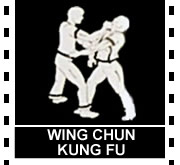
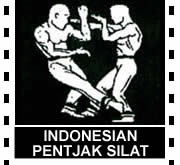
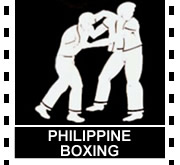

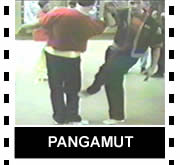

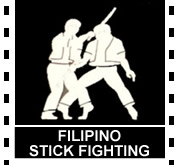




 Datu demonstrates begining of a BullDog neck Lock
Datu demonstrates begining of a BullDog neck Lock Datu Demos a reverse wrist lock
Datu Demos a reverse wrist lock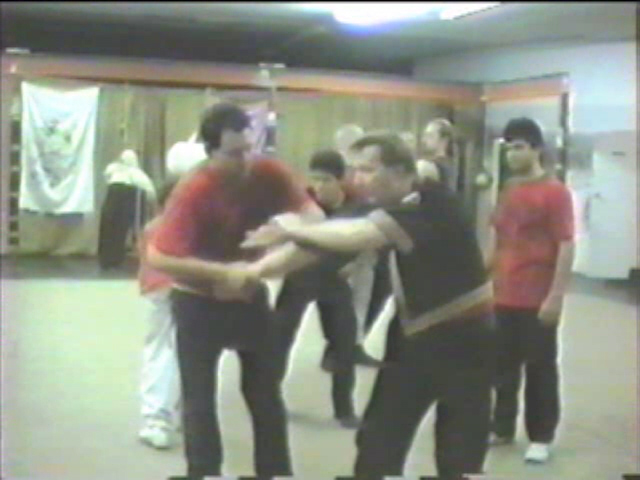 Datu demonstrates reverse of straight armbar hold
Datu demonstrates reverse of straight armbar hold